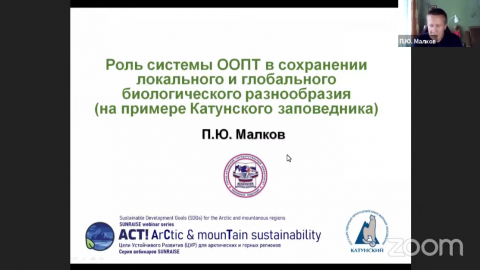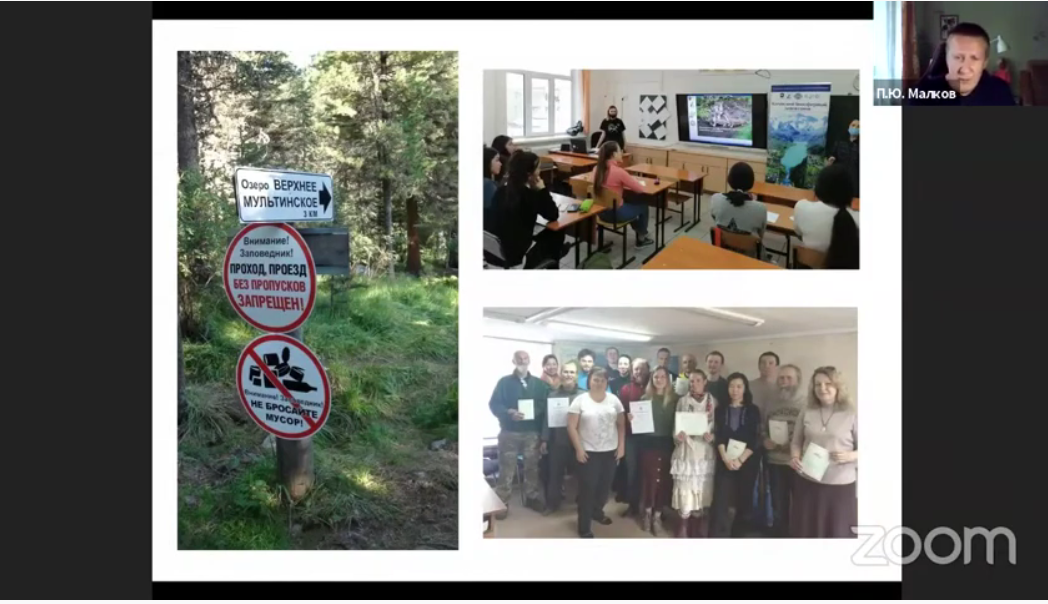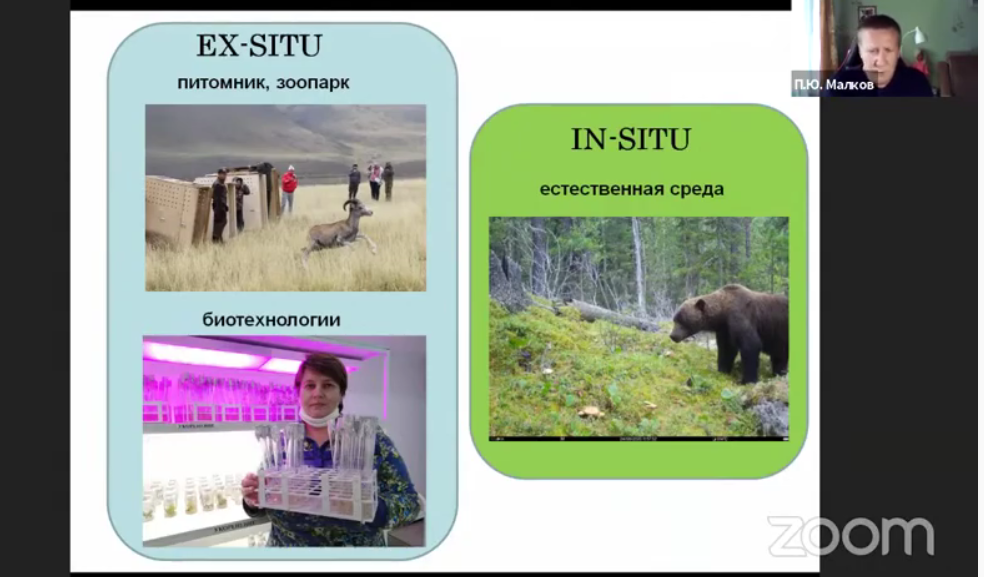The lecture by Petr Malkov “Role of protected areas in the conservation of local and global biodiversity (case of the Katunskyi Biosphere Reserve)”

The lecture by Petr Malkov “Role of protected areas in the conservation of local and global biodiversity (case of the Katunskyi Biosphere Reserve)” on September 28, 2021 was met with great interest and gathered listeners not only from universities, but also representatives of several protected areas. It was conducted within The ACT! webinar series that also makes for the MOOC of SDGs for Arctic and mountain sustainability.

Prof. Malkov briefly introduced the concept of biodiversity and history of its development; told the audience about the Convention on Biological Diversity and the factors affecting the highest species diversity in mountain areas. He explained the difference between the conservation of biodiversity “in-situ” - the conservation of species in their natural habitats, which is considered the most appropriate way of conserving biodiversity, and “ex-situ” conservation, that is the preservation of components of biological diversity outside their natural habitats. As an example of the latter, he told about the successful cooperation of Novisibirsk Zoo and Sailugem National Park on captive breeding and further release into the wild of Altai argali (Ovis ammon ammon).
Much attention in the lecture was paid to the role of protected areas in biodiversity conservation, and in particular to Katunskyi Biosphere Reserve located in the Altai Republic. Prof. Malkov gave a brief account of unique flora and fauna found in its territory and told about other important activities of the reserve, such as research, environmental awareness raising, ecological tourism development, and fight against poaching and illegal harvesting of non-timber products, including through organization of various courses and workshops in cooperation with Gorno-Altaisk State University for representatives of local communities in order to help them find alternative sources of income.




